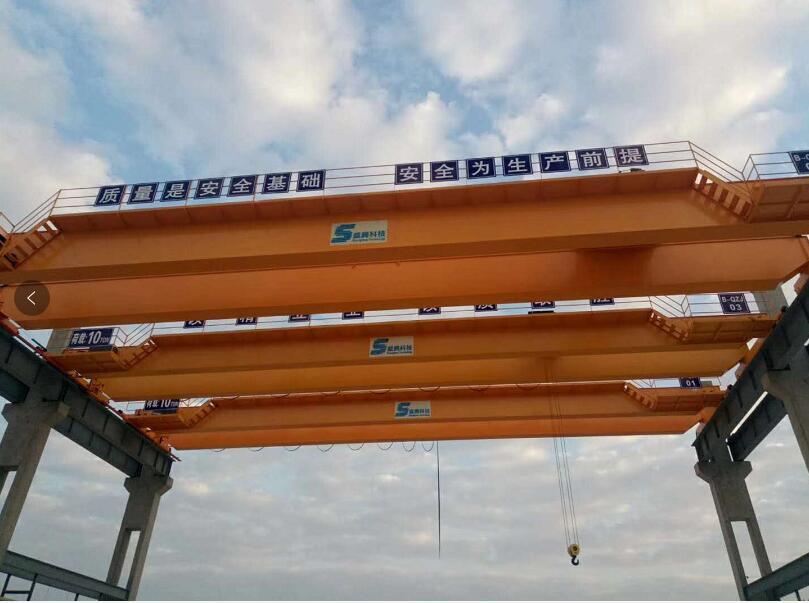Types and characteristics of explosion-proof electric hoists
Publication Time:
2021-11-30
Author:
Source:
Explosion-proof electric hoist Components include: motor, transmission mechanism, drum and sprocket. Based on the different positions of the motor and drum, it can be roughly divided into four types.
(1)Explosion-proof electric hoists with motor shaft perpendicular to the drum shaft use worm gear transmission, resulting in large width, heavy structure, low mechanical efficiency, and high processing difficulty. No manufacturer has ever produced this type of product.

(2)Electric hoists with motor shaft parallel to the drum shaft have the advantages of small height and length. Its disadvantages are large width, poor grouping, complex manufacturing and assembly, and a large turning radius.
(3)Explosion-proof electric hoists with the motor installed inside the drum have small length and compact structure. Its main disadvantages are poor motor heat dissipation, poor grouping, inconvenient motor inspection, installation and maintenance, and a complex power supply system.
(4)Electric hoists with the motor installed outside the drum have good grouping, strong versatility, easily adjustable lifting height, and convenient installation and maintenance. Its disadvantage is its large length and size.
Explosion-proof electric hoist Advantages include small length and size, with the motor installed inside the drum.
1. The electric hoist has a compact structure. Electric hoists with motor shaft perpendicular to the drum shaft use worm gear transmission. Its disadvantages include: large length and width, clumsy structure, low mechanical efficiency, and processing difficulties. The hydraulic system is dual-controlled, and the overflow adjustment valve and magnetic contact pressure gauge accurately control the pressure. The electrical control part uses low-voltage control, increasing the safety of the control system. No manufacturer has ever produced this type of product.
2. Structural characteristics: Explosion-proof electric hoists use a mechatronics design. By changing different molds, different specifications of wire ropes can be pressed, and the control is simple and safe. Its main disadvantages are poor motor heat dissipation, poor grouping, convenient motor inspection, installation and maintenance, and a complex power supply system. Electric hoists with the motor shaft parallel to the drum shaft have the advantages of small height and length. Its disadvantages are large width, poor grouping, complex manufacturing and assembly.
3. The components of an explosion-proof electric hoist include: motor, transmission mechanism, drum and sprocket. Based on the different positions of the motor and drum, it can be roughly divided into four types. The pressed wire rope has high tensile strength, beautiful appearance, and high speed. Pressing a set of wire ropes only takes a few minutes, greatly reducing labor intensity and improving work efficiency.
4. Electric hoists with the motor installed outside the drum have good grouping, strong versatility, easily adjustable lifting height, and convenient equipment inspection.
5. Explosion-proof electric hoist Electric hoists are widely used, but few people may know how to correctly utilize their advantages. I suggest that you learn more about the characteristics of electric hoists and related knowledge, so that you can better use them.
Recommended News
Analysis of various application scenarios and advantages of electric hoists
2025-01-13
2025-01-02
2024-12-23





